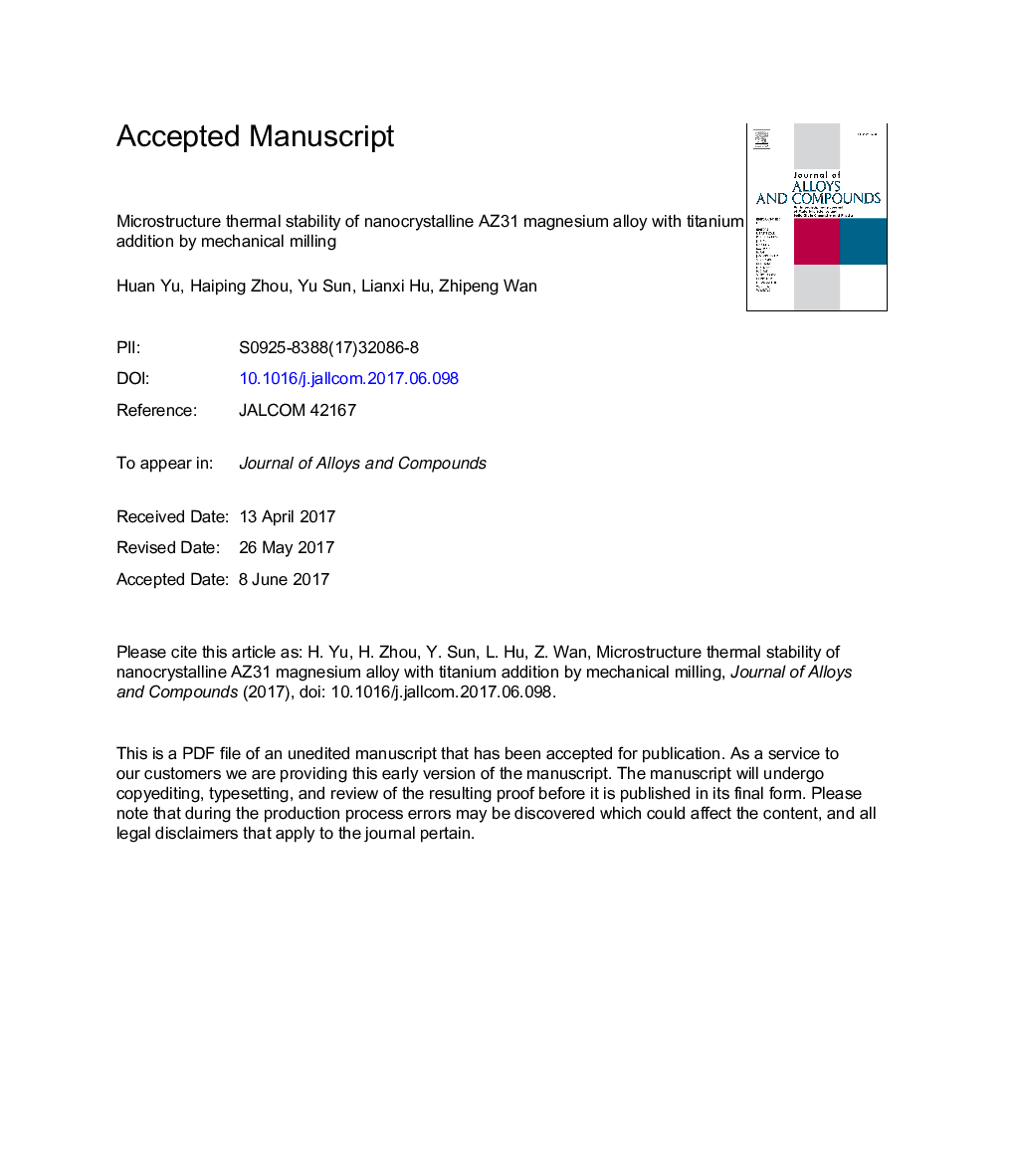| Article ID | Journal | Published Year | Pages | File Type |
|---|---|---|---|---|
| 5460672 | Journal of Alloys and Compounds | 2017 | 31 Pages |
Abstract
The nanocrystalline AZ31 magnesium (Mg) alloy with 18 wt% titanium (Ti) addition was isothermally annealed in the temperature range of 300-400 °C for different durations. A study on the thermal stability, including solid solubility evolution, phase transformation, grain growth kinetics and hardness evolution, was carried out. The microstructure evolution at elevated temperatures was investigated by the means of X-ray diffraction (XRD), scanning electron microscope (SEM), transmission electron microscope (TEM) and high angle annular dark field (HAADF). Based on lattice parameters evolution and TEM observation, it was confirmed that the Ti element precipitated from Mg matrix as Ti phase. After the material being annealed at 400 °C for 300min, as to the original Ti particulates, there is no segregation and growth with the average particulate size being approximately 367 nm, meanwhile, magnesium matrix shows limited grain coarsening with the average grain size increasing from 95 nm to 210 nm. In addition, the grain growth kinetics could be well described by the kinetics equation, D7âD07=kt. The activation energy for grain growth was calculated to be 120 kJ/mol, which is about 28 kJ/mol greater than that of pure Mg. Simultaneously, the stability of mechanical property was investigated by microhardness evolution at different annealing temperatures. It was found that after this material being annealed at 400 °C for 300min, the microhardness remained 105HV, which is two times larger than that of the as-cast AZ31 Mg alloy.
Related Topics
Physical Sciences and Engineering
Materials Science
Metals and Alloys
Authors
Huan Yu, Haiping Zhou, Yu Sun, Lianxi Hu, Zhipeng Wan,
